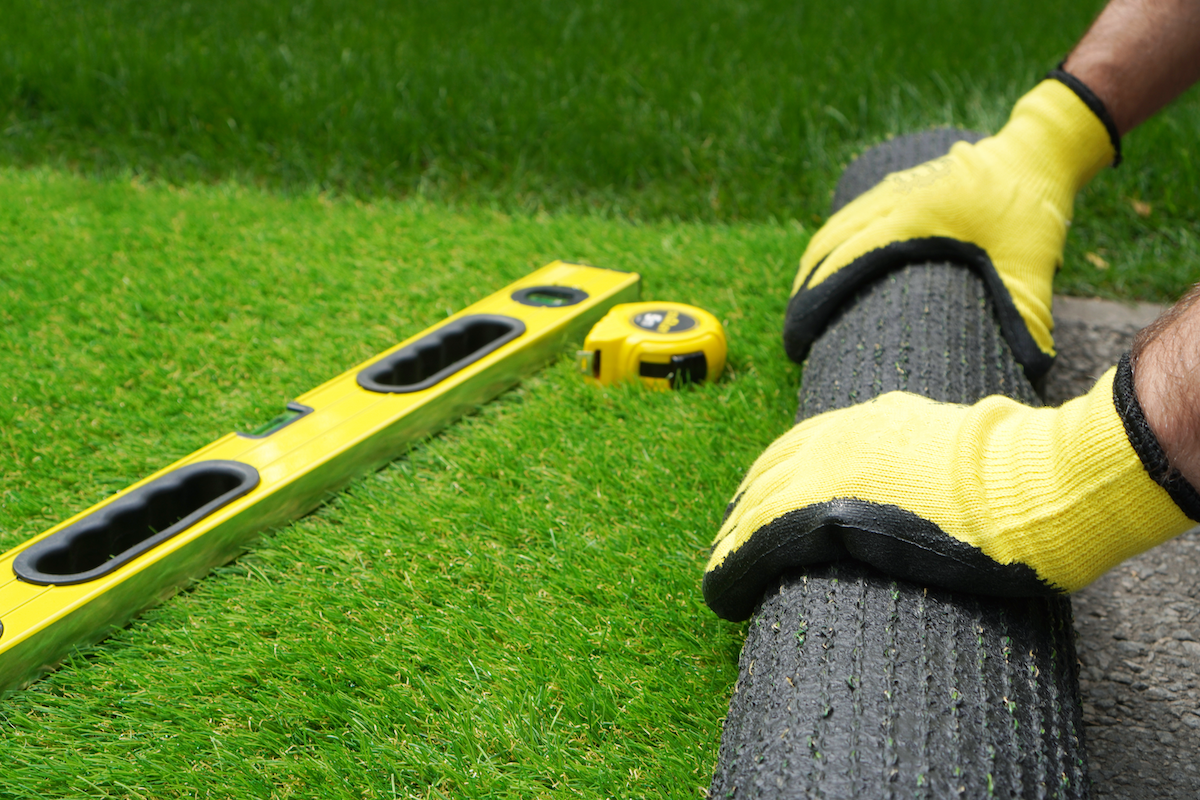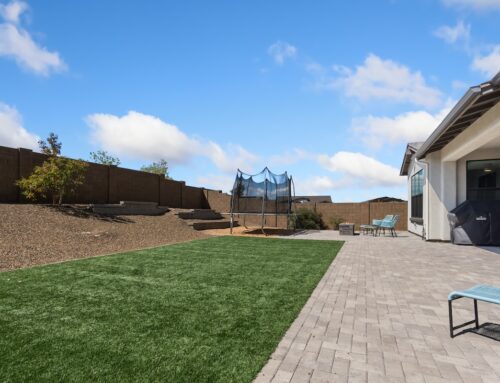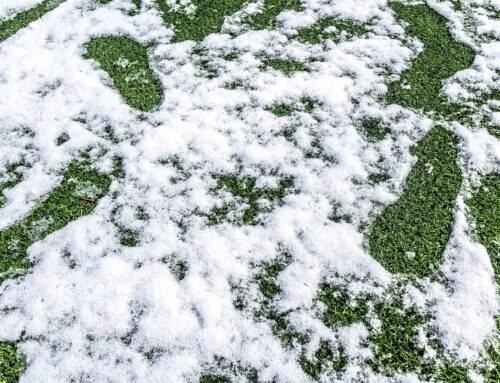Last Updated on December 21, 2023 by ReTurf
In today’s world, where convenience and sustainability often go hand in hand, the shift towards artificial turf is gaining momentum. ReTurf stands at the forefront of this change, offering both new and repurposed artificial turf from athletic stadiums. This guide aims to simplify the process of installing artificial turf on dirt, making it accessible for everyone, from DIY enthusiasts to professional landscapers.
The journey of transforming a bare patch of dirt into a lush, evergreen space is not as daunting as it might seem. Artificial turf installation, though it requires some effort and attention to detail, is a project that can bring immense satisfaction and long-term benefits. Whether you’re looking to create a small play area in your backyard or a large, open space for events, the versatility of artificial turf can cater to a wide range of needs and aesthetics.
In this guide, we will walk you through each step of the installation process. From preparing the dirt base to laying down the turf and adding the finishing touches, every stage will be covered in a manner that is easy to understand and follow. Our goal is to provide you with the knowledge and guidance needed to successfully install artificial turf, ensuring that your outdoor space not only looks fantastic but also stands the test of time.
As we move forward, remember that choosing artificial turf is not just about enhancing the beauty of your space; it’s about embracing a low-maintenance, environmentally friendly solution that aligns with a modern lifestyle. So let’s get started on this journey to create a beautiful and practical outdoor area with artificial turf.
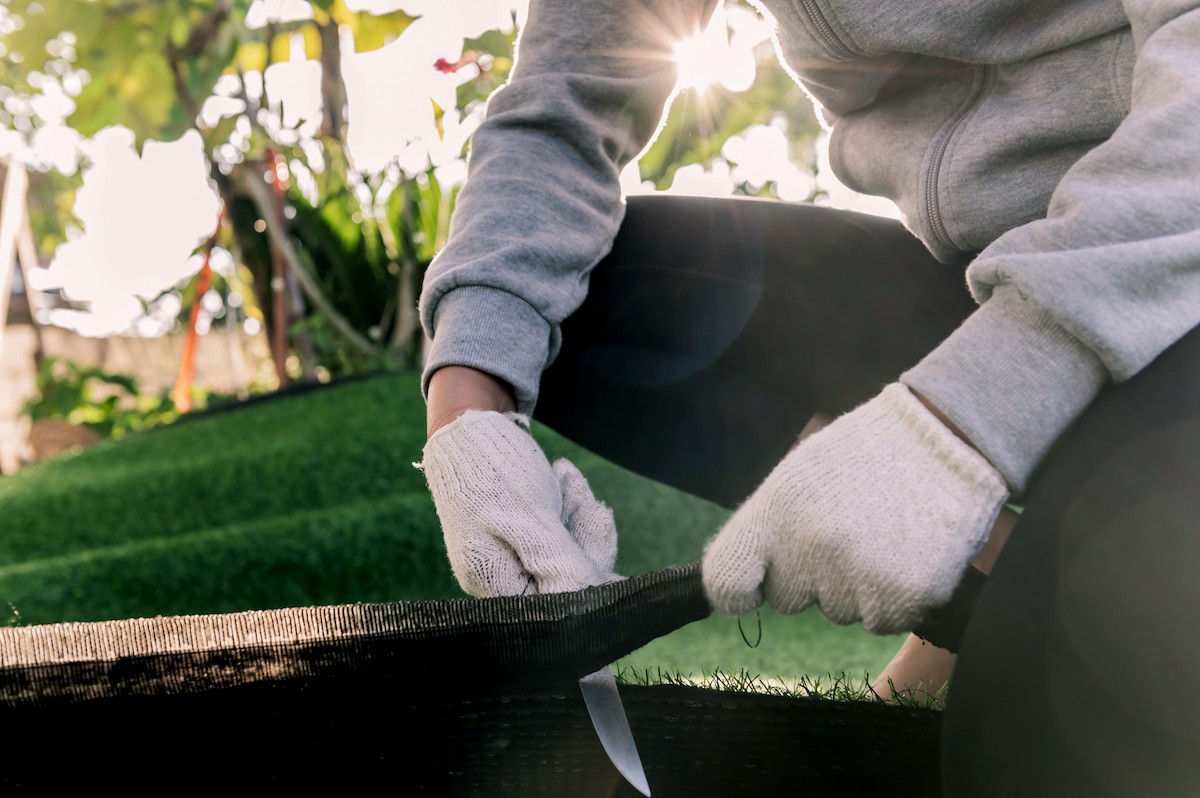
Why Choose Artificial Turf Over a Natural Lawn?
The decision to opt for artificial turf over a natural lawn is influenced by a variety of factors, each significant in its own right. As environmental concerns and lifestyle preferences evolve, artificial turf emerges as a smart choice for many homeowners, businesses, and recreational areas. Here, we explore the key reasons why artificial turf is often preferred over traditional grass.
- Reduced Maintenance Efforts
One of the most compelling advantages of artificial turf is its low maintenance nature. Natural lawns require regular mowing, watering, and fertilizing to maintain their appearance and health. This not only consumes time and effort but also involves ongoing costs. Artificial turf, on the other hand, eliminates these chores. It stays lush and vibrant throughout the year without the need for mowing or watering, freeing up time for other activities and reducing water bills.
- Long-Term Durability and Consistent Appearance
Durability is another significant factor. Artificial turf is designed to withstand heavy use and various weather conditions. This makes it particularly suitable for areas that experience frequent foot traffic or adverse weather. Unlike natural grass, which can become patchy, discolored, or worn out, artificial turf maintains a consistent appearance, ensuring your space looks inviting and well-kept year-round.
- Eco-Friendly and Water Conservation
In an era where water conservation is increasingly important, artificial turf offers an environmentally friendly alternative. It requires no watering, significantly reducing water usage. This is particularly beneficial in regions prone to drought or where water conservation is a priority. Additionally, artificial turf eliminates the need for fertilizers and pesticides, which can be harmful to the environment.
- Allergy Reduction and Improved Accessibility
For those with allergies, artificial turf can be a blessing. It reduces exposure to grass pollen, a common allergen, making outdoor spaces more accessible and comfortable. This is especially important in public spaces like schools and parks, where users may have varying sensitivity to allergens.
- Versatility and Aesthetic Appeal
Artificial turf offers remarkable versatility in terms of design and application. It can be installed in areas where natural grass might struggle to thrive, such as shaded spaces or rooftops. Additionally, the aesthetic appeal of artificial turf has improved significantly over the years, with modern options closely resembling natural grass in look and feel.
- Safety and Playability
For sports fields and playgrounds, artificial turf provides a safe and reliable surface. It offers consistent playability, reduces the risk of injuries associated with uneven natural turf, and can be tailored to specific sporting requirements.
Choosing artificial turf over natural grass is not just a matter of aesthetic preference but a decision influenced by practicality, environmental considerations, and lifestyle needs. Its benefits align well with contemporary priorities, making it a smart choice for those looking to create sustainable, low-maintenance, and attractive outdoor spaces.

A Practical Guide to Installing Artificial Turf on Dirt
Installing artificial turf on a dirt surface is a project that many homeowners can undertake with confidence. This guide is designed to walk you through the process step by step, ensuring that even those new to DIY projects can achieve great results. You won’t need any specialized tools, just a bit of effort and attention to detail. Let’s dive into the process:
- Site Preparation: The first step is to prepare the area where the turf will be laid. Clear the site of any debris, stones, or existing grass. It’s crucial to ensure the ground is as level as possible. If there are any dips or mounds, level them out. This might involve digging out high spots or filling in low spots with soil. Once you’re satisfied with the level, compact the soil to create a firm base. This can be done with a simple hand tamper or roller.
- Creating a Solid Foundation: Once the site is level, lay a base of crushed stone or gravel. This layer should be about 2 to 3 inches thick. It’s important for drainage and provides a stable foundation for the turf. Spread the gravel evenly and then compact it using your tamper or roller. A well-compacted base is key to prevent the turf from shifting or sagging over time.
- Installing a Weed Barrier: A weed barrier is essential to prevent unwanted growth under your turf. Roll out a landscape fabric over the compacted base and secure it with landscape staples. This step is important for maintaining the longevity and appearance of your turf.
- Rolling Out the Turf: Now it’s time to roll out your artificial turf. Lay it over the prepared base, making sure to eliminate any wrinkles or folds. If your project involves multiple rolls of turf, ensure they are laid in the same direction for a uniform appearance. It’s helpful to let the turf settle for a couple of hours or even a day to remove any creases from transportation.
- Trimming and Securing: With the turf in place, trim the edges to fit your area. A utility knife works well for this. Be patient and make sure your cuts are clean and precise. After trimming, secure the turf to the ground. You can use 4-6 inch nails or landscape staples, placing them along the perimeter and anywhere necessary to keep the turf flat and in place.
- Adding Infill (Optional): Some types of artificial turf require infill to help the blades stand up and to add weight. This step is optional and depends on the type of turf you’ve chosen. If required, spread the infill evenly over the turf and then gently brush the turf to work the infill into the base of the fibers.
- Final Touches: The last step is to brush the turf with a stiff broom or a turf rake. This helps the fibers stand up and gives your new lawn a lush, natural look. Walk around the turf to check for any loose areas or edges that need additional securing.
There you have it! Your artificial turf is now installed. This new addition to your outdoor space is not only aesthetically pleasing but also practical and low-maintenance, offering a green and inviting area year-round.
Remember, while the process is straightforward, taking your time and paying attention to details will make all the difference in the final outcome. With your new artificial turf in place, you can enjoy a beautiful lawn without the constant upkeep of natural grass.
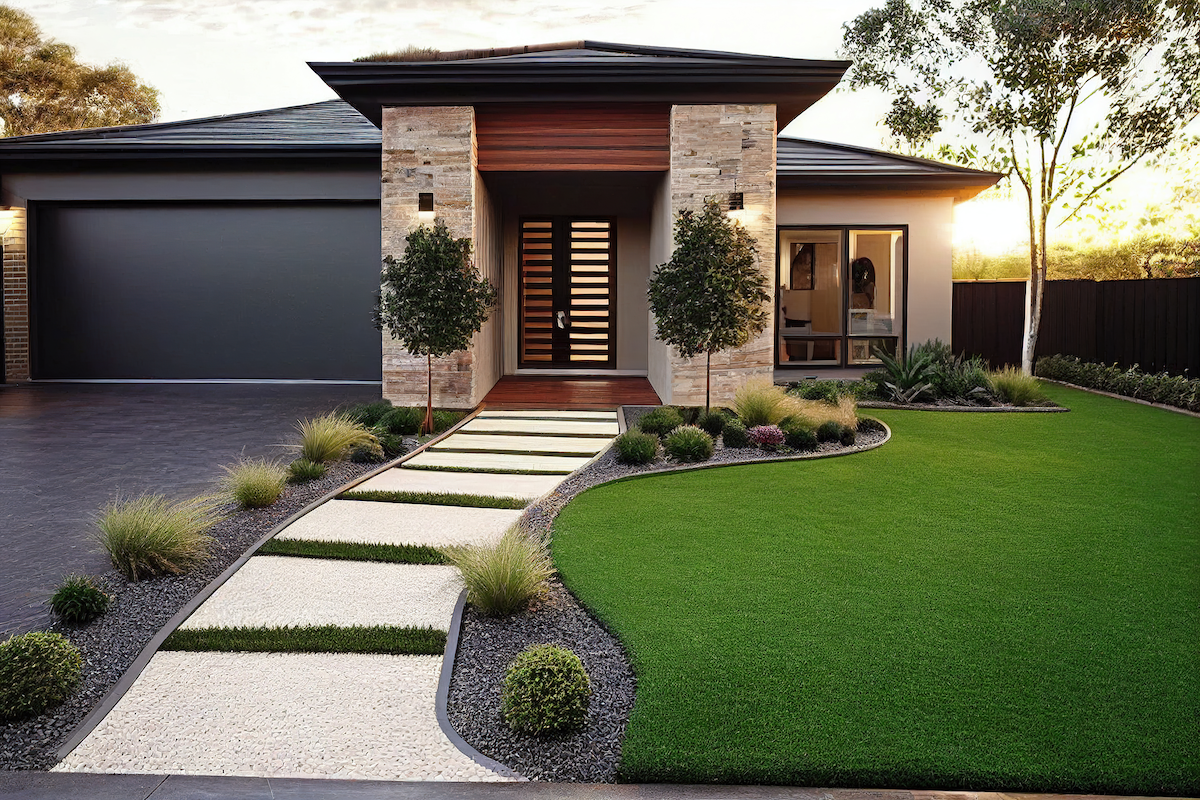
Sealing the Deal: Quality Turf and Expertise from ReTurf
Embarking on a DIY project to install artificial turf can be a fulfilling endeavor, especially when you have the right partner by your side. ReTurf stands out as a beacon of quality and expertise in this field. Our selection of products and the depth of our knowledge ensure that your journey from a bare patch of dirt to a lush green space is smooth and enjoyable.
From Athletic Fields to Your Backyard
At ReTurf, we specialize in giving used turf from athletic stadiums a new lease on life. This not only offers you an affordable solution but also contributes to environmental sustainability. For those seeking brand-new options, our selection includes top-quality new turf in various sizes and colors, catering to all types of landscaping dreams.
Expert Guidance Every Step of the Way
Our commitment to your project goes beyond providing high-quality turf. We understand that the installation process might seem daunting, which is why our team is equipped to offer guidance and support. With experience in both DIY setups and professional installations, our experts are here to answer your questions, ensuring your project is successful and satisfying.
A Sustainable Choice with ReTurf
Choosing ReTurf means not only enhancing the beauty of your space but also making an eco-conscious decision. Our approach to reusing high-quality turf aligns with the growing need for sustainable practices in landscaping. By opting for our used turf, you’re contributing to a greener planet while enjoying a beautiful, low-maintenance lawn.
As you move forward with your artificial turf project, remember that ReTurf is more than just a supplier – we are your partner in creating the ideal outdoor space. Whether you’re a seasoned DIYer or new to turf installation, our team is here to help you make the right choices for your unique space. Get Started!

